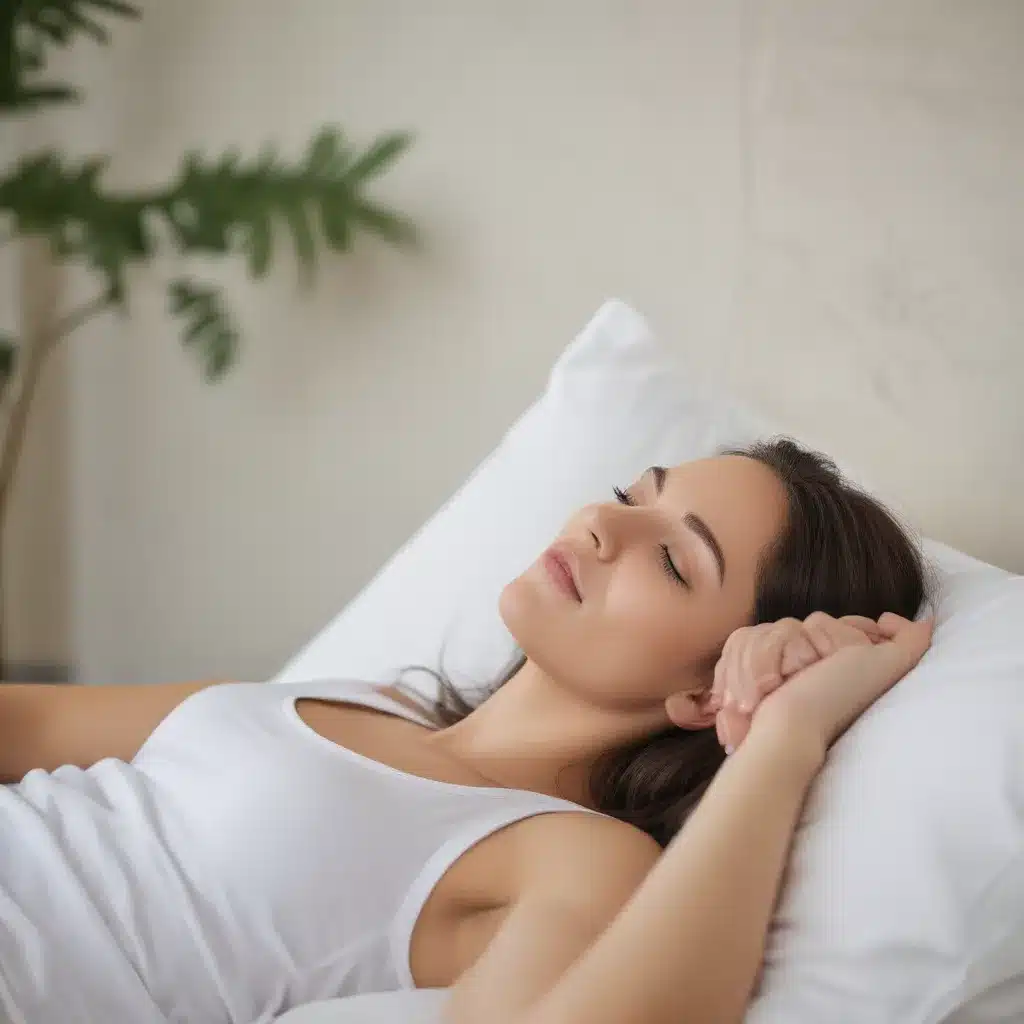
The Tightly-Wound Traveler’s Remedy
As I step out of the bustling streets of Seoul and into the tranquil lobby of the Hotel Stay Inn Seoul, I can already feel the tension in my shoulders start to melt away. The soothing, earthy tones and clean lines of the design immediately put me at ease, a welcome respite from the sensory overload of this vibrant city.
But the real magic happens when I head up to my room and discover a simple yet powerful tool waiting for me – instructions for a progressive muscle relaxation exercise. “Just what the doctor ordered,” I think to myself, as I kick off my shoes and get comfortable on the plush bed.
You see, as much as I adore exploring new destinations, the constant stimulation and unexpected challenges of travel can sometimes leave me feeling anxious and overwhelmed. That’s why I’m thrilled to find that this hotel has taken the time to address one of the most common issues faced by guests – the need to unwind and de-stress.
What is Progressive Muscle Relaxation?
Progressive muscle relaxation, or PMR, is a technique that involves systematically tensing and then releasing different muscle groups throughout the body. The idea is that by consciously experiencing the contrast between muscle tension and relaxation, you can train your body to recognise and release unnecessary stress and anxiety.
Research has shown that PMR can be an effective tool for managing a variety of conditions, from insomnia and chronic pain to headaches and yes, even anxiety. And the best part? It’s something anyone can learn and practice, right in the comfort of their own hotel room.
Putting PMR Into Practice
As I settle in and read through the instructions, I can’t help but chuckle at the simplicity of the process. It’s almost comically straightforward, but I know from experience that the power of PMR lies in its subtlety.
The first step is to get into a comfortable position, either lying down or seated in a chair. I choose to lie back on the bed, letting my muscles sink into the plush mattress. Then, I start by focusing on my feet and toes, consciously tensing those muscles for a count of five before releasing the tension and allowing them to relax.
As the instructions explain, I repeat this process, working my way up through the different muscle groups – calves, thighs, abdomen, chest, fingers, hands, arms, shoulders, and finally, my face and neck. With each contraction and release, I can feel the stress melting away, replaced by a profound sense of calm.
But the true magic happens when I reach the final step: a full-body scan, consciously noting any remaining tension or tightness and deliberately releasing it. I’m amazed by how much of my anxiety has dissipated, replaced by a deep, almost languid sense of relaxation.
The Science Behind the Serenity
Now, I know what you might be thinking – “How can something so simple be so effective?” Well, the science behind PMR is pretty fascinating.
You see, when we experience anxiety or stress, our bodies tend to respond by tensing up our muscles. This is part of the “fight-or-flight” response, preparing us to either confront the perceived threat or flee from it. But the problem is, in modern life, we often find ourselves in a state of chronic stress, with our muscles perpetually clenched and our nervous systems on high alert.
By deliberately tensing and then relaxing our muscles, PMR interrupts this cycle, signaling to our brains that the threat has passed and it’s safe to let go. And the more we practice this technique, the more we train our bodies to recognize and release unnecessary tension, ultimately helping to lower our baseline levels of anxiety.
The Traveler’s Toolkit
But progressive muscle relaxation isn’t just a powerful anxiety-reducing tool – it’s also incredibly versatile, with applications that go far beyond the hotel room.
For example, I’ve found that a quick PMR session can be a lifesaver during a long flight or before an important meeting. The simple act of consciously tensing and releasing my muscles helps me to reset and regain a sense of control, even in the midst of stressful situations.
And the best part? PMR is something you can do anywhere, anytime. All you need is a few minutes and a little bit of focus. No special equipment, no complicated instructions – just your own body and a willingness to tune in to your physical sensations.
The Relaxation Revolution
As I lie here in my cozy hotel room, I can’t help but marvel at the transformative power of this simple technique. It’s a stark reminder that sometimes, the most effective solutions are the ones that seem the most straightforward.
But don’t let the simplicity fool you – progressive muscle relaxation is a true game-changer, a way to reclaim your sense of calm and control in a world that can often feel chaotic and overwhelming. And as I prepare to head out and explore the wonders of Seoul once more, I know that I have a powerful tool in my arsenal to help me navigate the inevitable ups and downs of the journey.
So, if you find yourself feeling anxious or tense during your travels, I encourage you to give progressive muscle relaxation a try. Who knows – it just might be the key to unlocking a whole new level of serenity and enjoyment on your next adventure.

